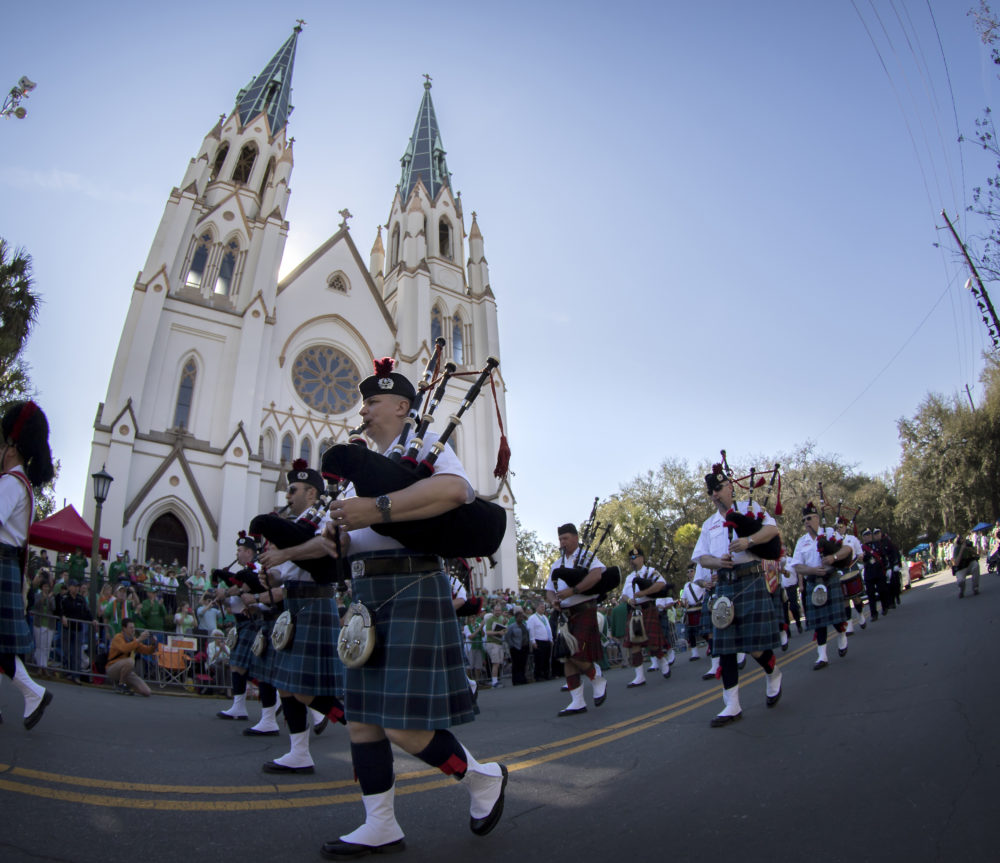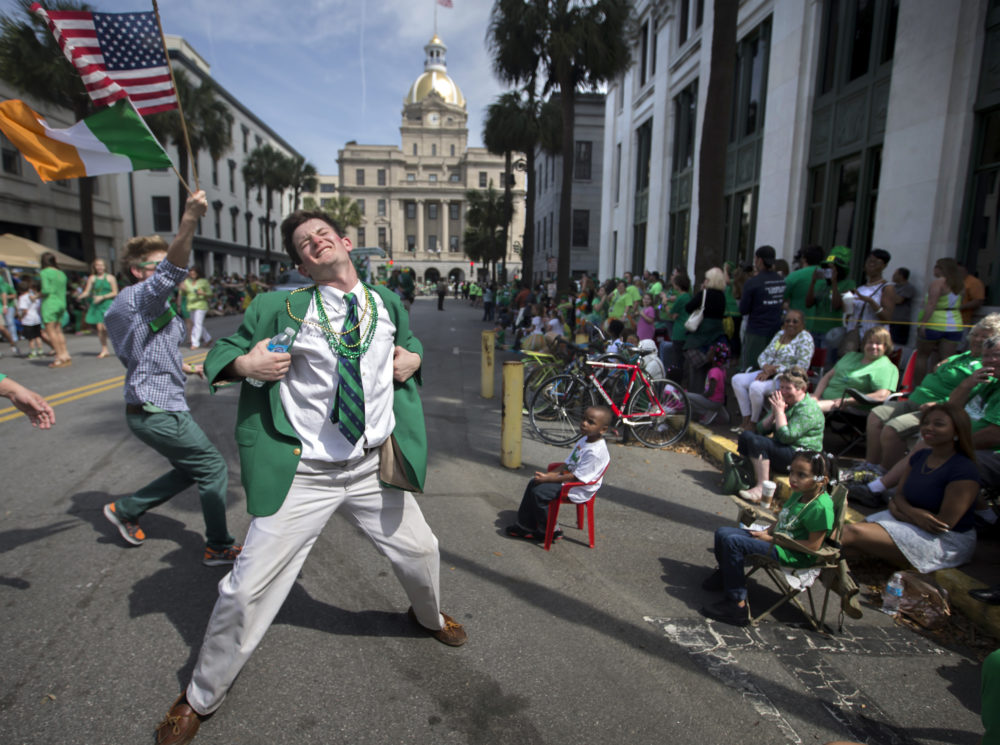The religious and cultural history of St. Patrick’s day
Every March 17, people adorn green attire out of fear for being pinched.
All around the world, people flock to pubs and bars to celebrate, and some of the oldest, biggest parades happen on this day.
St. Patrick’s Day has been observed for over 1,000 years as a religious holiday.
The holiday is named after St. Patrick, who lived in the fifth century. He was the primary patron saint and national apostle of Ireland. According to Encyclopedia Britannica, St. Patrick is credited with bringing Christianity to Ireland.
St. Patrick’s Day is historically considered a religious holiday because it commemorates the life of St. Patrick and the arrival of Christianity in Ireland.
Historically in Ireland, church services on St. Patrick’s Day were followed by parades and parties. In her book, “Shamrocks, Harps, and Shillelaghs: The Story of the St. Patrick’s Day Symbols,” Edna Barth says the parades and parties were marked with Irish music, songs and dances.
“There was a religiousness about it, a sanctity about it,” said Bridget Haggerty, a Irish-American citizen, to Jennifer Vernon from National Geographic News.
This religiousness is continued in many aspects and symbols of the holiday.
 AP Photo/Stephen B. Morton
AP Photo/Stephen B. Morton FILE- In this March 17, 2015 file photo members of the Dublin Fire Brigade Pipe Band perform while marching past The Cathedral of St. John The Baptist during the St. Patrick’s Day parade in Savannah, Ga. Vice President Mike Pence is planning to attend Savannah’s St. Patrick’s Day parade. (AP Photo/Stephen B. Morton, File)
The shamrock rose to fame when St. Patrick used it to explain the Holy Trinity to the people of Ireland, said Brad Hawkins, professor of religious studies at Cal State Long Beach University.
Each leaf of the shamrock represented each branch of the Holy Trinity (Father, Son and Holy Spirit).
The harp is a lesser-known symbol of St. Patrick’s Day. Olivia Waxman said the harp is one of Ireland’s most prominent religious symbols. Since St. Patrick is such a prominent religious figure of Ireland, he is usually depicted with a harp to represent his home country. However, in modern times the holiday has become increasingly less religious and overwhelmingly festive for the majority of Irish-Americans. Pub crawls, leprechaun costumes, and everything green have become staples of the holiday.
“When I think of St. Patrick’s Day, there is a lot of green, four leaf clovers and lots of pinching,” said Ambyr Vanwinkle, a student at Utah State University.
Many Irish people, including journalist Niall O’Dowd, are upset with how the Irish people are portrayed on St. Patrick’s Day. O’Dowd said that the pictures of Irish people falling over each other and drooling for beer portrayed in newspapers and on social media are ridiculous stereotypes. “This is not respectful nor correct, I don’t even know any Irishman who acts like that on St. Patrick’s Day,” O’Dowd said.
The portrayal of drunk, disorderly Irish people was first displayed in newspapers after they took to the streets to celebrate the holiday. History.com Staff members describe these portrayals as “drunk, violent monkeys.”
 Chris Howell/The Herald-Times via AP
Chris Howell/The Herald-Times via AP “Fast” Freddie Hopf, eats a plate of corned beef and cabbage with a side of German potatoes and a green Budweiser for lunch at the Shamrock Cafe in Ireland, Ind., Friday, March 16, 2018. Residents of Ireland celebrate St. Patrick’s Day all month long. (Chris Howell/The Herald-Times via AP)
With so many variations from the past and modern stereotypes, it takes a look back into history to understand where these traditions and ideas came from.
“I would love to experience what a historical Irish person would do on St. Patrick’s Day,” said Sarah Twiggs, a student at USU.
St. Patrick’s Day takes place during the Christian observance of Lent. However, on this day the traditional Lent restrictions of not eating meat or drinking alcohol are lifted. This is because the Irish people are encouraged to praise and feast in honor of St. Patrick.
Dr. John Nagle said since the ban on alcohol is so famously lifted for one day, this is why it has become such an intrinsic part of the holiday.
Until the late 1970s, Irish laws required all pubs in Ireland close on March 17 in observance of the religious date. However in 1995, the Irish government lifted this law to start a campaign to promote Ireland and its history to the rest of the world.
“So ironically enough, in Ireland until recently, on St. Patrick’s Day you couldn’t get a drink,” Haggerty said.
Irish Immigrants first started coming to the United States in large quantities during the Great Famine. They were quick to bring their culture to their new home.
The tradition of wearing green in the United States originated from Irish immigrants, who wore green to show pride and support for their home country, especially after the Great Famine according to Waxman.
 AP Photo/Stephen B. Morton
AP Photo/Stephen B. Morton FILE- In this March 17, 2015 file photo Lamar Lester III dances while marching with the Doherty Clan during the 191st St. Patrick’s Day parade in Savannah, Ga. Vice President Mike Pence is planning to attend Savannah’s St. Patrick’s Day parade. (AP Photo/Stephen B. Morton, File)
The Irish wore green as a color of support because of the Irish rebellion. The color green wasn’t officially associated with St. Patrick’s Day until 1798, when the color changed from blue.
According to Ashley Ross of Time Magazine, 1798 was the year of the Irish Rebellion. Up until that point, St. Patrick had been associated with the color blue, since it was the color of the Irish royal court. The rebel’s officer uniforms were dark green according to this police report to differentiate themselves from the royal army.
After the rebels succeeded in their efforts, they changed St. Patrick’s color to green to represent the reformed country.
Besides bringing the color green to the United States, the Irish Immigrants brought their celebrations.
Melissa Bragg Sack, of National Public Radio, said Irish-American immigrants are responsible the bigger celebrations known today, especially in the United States.
The first parade to celebrate St. Patrick’s Day took place in New York, US, instead of Ireland.
The New York City St. Patrick’s Day Parade first took place in 1848, after New York Irish Aid societies united several smaller Irish celebrations. Today, the parade is the largest in the United States. Over 150,000 participate in the parade, according to the History.com Staff.
New York isn’t the only place with a huge St. Patrick’s Day celebration. Inhabitants of Chicago dye the Chicago river green every year.
In 1962, city pollution-control workers in Chicago used 100 pounds of green dye in the Chicago river to find illegal sewage pollution. After the workers had completely dyed the river green, they realized it would be an unique way to celebrate St. Patrick’s Day.
According to the History.com Staff, the tradition continues to this day, but only 40 pounds of dye is used to minimize environmental damage.
St. Patrick’s Day started as a religious holiday, but has evolved to be more of a cultural celebration.
“(St. Patrick’s Day) is out of the norm, that’s why it is so fun to be a part of,” said Lauren Smith, a student at USU.
Enjoy St. Patrick’s Day this year!
—brianne.sorensen@aggiemail.usu.edu
@SorensenBrianne

